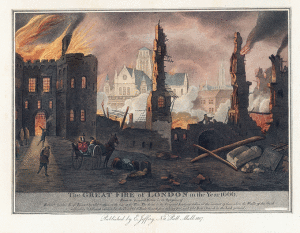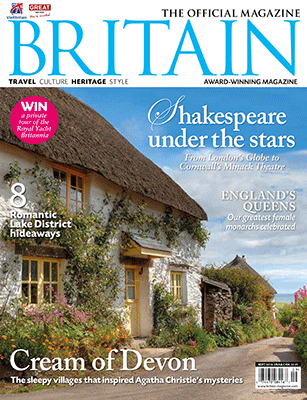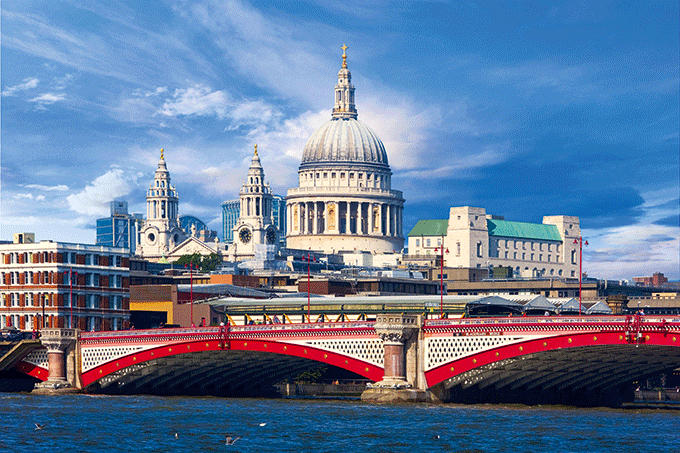The blaze in September 1666 raged for days and destroyed four-fifths of the capital, leaving Britain’s trade, government and prosperity in ruins
When, early on 2 September 1666, the famous diarist Samuel Pepys heard of a fire in the City of London that had already destroyed 300 houses, he hired a boat to view the scene from the Thames. To his horror he noted: “Everybody endeavouring to remove their goods, and flinging into the river or bringing them into lighters that lay off; poor people staying in their houses as long as till the very fire touched them, and then running into boats, or clambering from one pair of stairs … to another.”
The dramatic conflagration wasn’t the first – nor last – to strike the capital, but the Great Fire of London was one of the most devastating events in the city’s history. Raging from 1am on Sunday 2 September to dawn on Thursday 6 September, it resulted in four-fifths of the City being destroyed, including 13,200 houses and 87 churches. Miraculously, there were only six officially recorded deaths, but the very hub of Britain’s trade, government and prosperity stood in ruins.
Pudding Lane bakery
Seventeenth-century London was a turbulent place: the Great Plague had decimated a third of its population in 1665, while frictions between Protestants and Catholics, as well as England’s recent wars with France and the Netherlands, made its citizens nervous. In the event it was a spark in Thomas Farriner’s bakery in Pudding Lane that kindled the disaster. It’s thought his oven was not fully extinguished overnight and in the early hours wood beside it caught fire. While the baker and his family escaped, their unfortunate maid perished.
The fire could hardly have started in a more dangerous place, close to the river’s warehouses and shops packed with combustibles such as coal, timber, oil and alcohol. It had been a long, dry summer and, with a strong easterly wind fanning the flames, the City’s mainly timber-framed buildings were easily lit, their overhanging jetties and the crowded nature of the narrow streets inviting fire to spread. Yet the Lord Mayor Thomas Bludworth, called to the scene at 4am, dismissed the threat posed by the fire and returned to bed, saying: “A woman might piss it out.”
When Pepys conveyed the order to Bludworth in Cannon Street at noon, the Lord Mayor had changed his earlier tune. “To the King’s message he cried, like a fainting woman, ‘Lord, what can I do? I am spent: people will not obey me. I have been pulling down houses, but the fire overtakes us faster than we can do it.’”

With no organised fire brigade in London in 1666, people were reliant on buckets and ladders, fire hooks to pull down buildings, and hand-pumped machines to squirt water. The fire rampaged down Fish Street Hill, onto London Bridge, along the Thames and north of Thames Street, destroying warehouses, St Magnus the Martyr Church and Fishmongers’ Hall, the first of dozens of livery company halls to be ruined. Terrified by such large-scale calamity, people began to fear a French or Dutch attack, and armed mobs hunted for foreign or Catholic arsonists. Militia were called in to control the crowds.
Over five days the conflagration spread across 436 acres, ripping through Lombard Street, Cornhill and the Royal Exchange, also Threadneedle Street, Baynard’s Castle, Cheapside, the Sessions House in the Old Bailey, Ludgate and Newgate Gaol (from which prisoners escaped), Temple and Fleet Street. When the fire reached within 300 yards of the Tower of London, all available resources rushed to the scene.
St Paul’s Cathedral, in wooden scaffolding awaiting restoration, was not so lucky; its roof collapsed and thousands of books stored in the crypt fuelled the inferno.
Local heroes
There are tales of heroism: a seaman and a soldier climbed onto the roof of Middle Temple Hall to beat out flames. And tragedy: an 80-year-old watchmaker refused to leave his home in Shoe Lane and it fell on him. But mainly people fled to the fields outside the City; the court packed its bags; even Pepys, hearing the fire was approaching Barking Church near his home, buried his wine and Parmesan cheese in the garden for safekeeping and temporarily absented himself.
During the fire, King Charles rode around the City distributing money to encourage fire-fighting efforts and he ordered supplies to be brought for the homeless thousands camped in the fields. His brother, James Duke of York, took command of operations from the second day and set up posts manned by civilians and soldiers to tackle the fires. From the third day, gunpowder was used to demolish houses more quickly than pulling them down and by that evening the wind had also dropped. The fire fighters gradually gained control.
Diarist John Evelyn records wandering through the eerie aftermath of the disaster, burning the soles of his shoes on smouldering ground and losing his way in the “dismal desert”. The next month an official day of fasting was held and £12,794 collected from across the country to provide aid to London’s newly destitute; many would move away.
The Monument
Much post-fire architecture has since vanished, but gems can still be found like the home (now museum) of the dictionary-compiler Dr Johnson in Gough Square. Visit, too, the Monument (junction of Monument Street and Fish Street Hill) constructed by Wren and Robert Hooke. Completed in 1677, the column is 61 metres tall – the exact distance between it and the site in Pudding Lane where the fire started – and 311 steps lead to a viewing platform offering superb vistas.
The most famous legacies of the rebuilding are Wren’s churches and his masterpiece, St Paul’s Cathedral. Twenty-nine of the 51 churches he designed still stand, remarkable for their striking array of steeples and spires: from the baroque of St Vedast to the Gothic of St Dunstan-in-the-East, the slender spire of St Martin-within-Ludgate and the ‘wedding cake’ tiers of St Bride.
The ‘tabula rasa’ left by the Great Fire of London may not have been filled by a model renaissance city as proposed by visionaries like Wren, but it inspired some genuine treasures and made the capital an altogether safer city for generations to come.
Words: Neil Jones
Related articlesStep into another era at London’s Savoy Hotel |
Click here to subscribe! |
Download BRITAIN Magazine to your mobile today

 No mobile device? Purchase directly on Zinio for your desktop!
No mobile device? Purchase directly on Zinio for your desktop!






 © 2024
© 2024